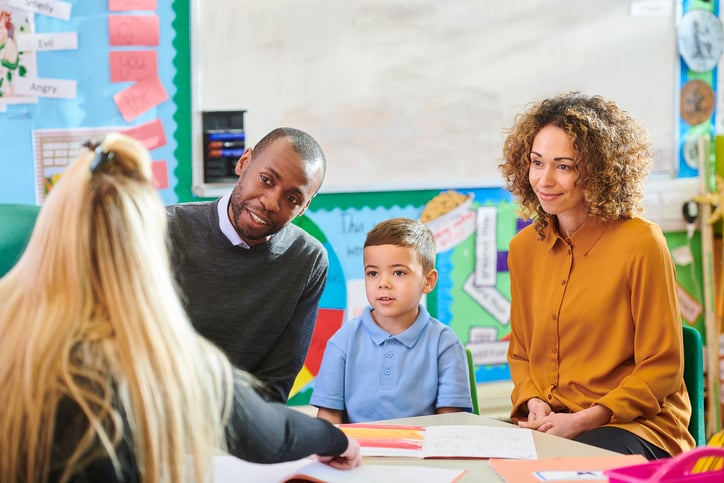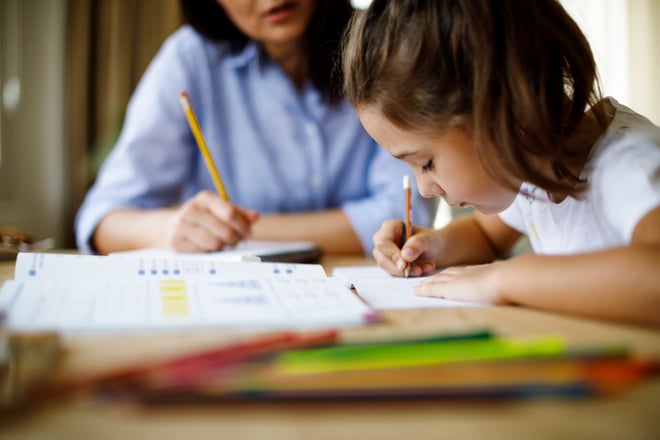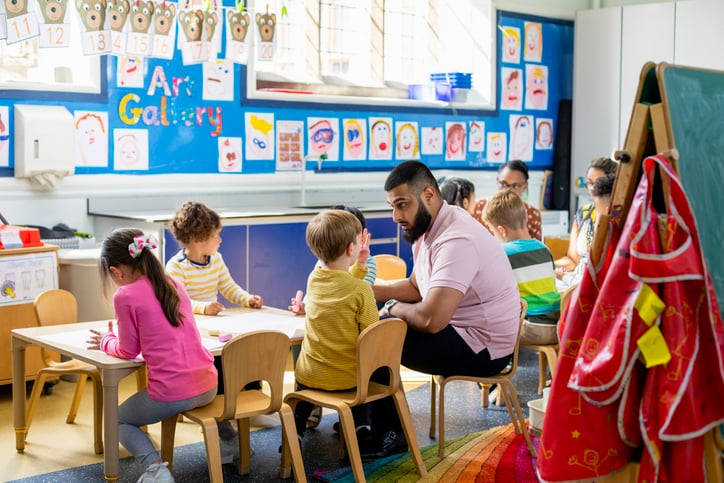Supporting Students in the Least Restrictive Environment
When developing a child’s IEP, the Least Restrictive Environment (LRE) is one of several components that must be determined regarding placement. LRE has been a part of federal special education law since 1975. It has continued to recognize the benefits for autistic children or those who have disabilities to be educated alongside neurotypical peers while providing supplementary aids and support services to help them succeed.
Deciding Placement and Supplementary Aids and Support Services
IEP teams must make individualized decisions about the special education placement for students that consider the placement in the general education setting to the “maximum extent appropriate” with their non-disabled peers with appropriate supplementary aids and services. Any supplementary aids and services provided to a student are determined on an individual basis and can be as simple as allowing the student to take breaks, shortening the length of an assignment, or sitting toward the front of the classroom.
IDEA defines supplementary aids and services as supports that are provided in the general education setting or other education-related settings, such as the gym, for the student to make progress and to be educated with nondisabled peers to the maximum extent appropriate. Examples may include, repeating and simplifying instructions and assignments, breaking tasks into smaller chunks, supplementing verbal instructions with visual instructions, or assigning an instructional aide to help support the student. Any supplementary aids and services provided to a student are determined on an individual basis.
Steps to Take for Choosing Supports and Services
IEP teams are charged with identifying which supports and services each child with an IEP requires to make progress within the general education curriculum and in what setting the students will make progress. These decisions are determined by:
1. Looking at the student's assessment data and Present Levels of Academic Achievement and Functional Performance (PLAAF) across all domains.
Based on the student's current PLAAFs, services can include:
- Specialized instruction in either a pull-out, push-in, inclusion, or a combination of placements where the child will make progress on the goals and objectives outlined in the IEP.
- Speech and language therapy
- Occupational therapy
- Physical therapy
- Social work support
- Classroom or personal aide
2. Deciding a student’s placement.
This is a detailed and delicate process that includes many factors. Placement decisions are made after the IEP is developed with the team, which includes the parents/guardians. The IEP team, including the parents, needs to determine which educational setting will best meet the individualized needs of the student.
3. Taking into account that the LRE is unique to each student.
The appropriate placement for any student includes many factors, such as:
- The goals and objectives outlined in their IEP
- The LRE requirements
- The placement will support the strong likelihood that the students will attain his/her goals set for in their annual IEP
- The consideration of any potentially harmful effects that the placement option might have on the student

Classroom Placement Can Be Challenging, But Also Beneficial for Autistic Students
Placement in a general education classroom as the Least Restrictive Environment can be challenging for autistic students. This can be especially difficult if the student displays weaknesses in areas such as social awareness, central coherence (thinking big picture), executive functioning, and behavior. However, the ability to be fully included and work amongst same-aged peers has a positive impact on so many students with autism and can also provide opportunities for neurotypical students to develop greater acceptance of students who learn differently. With support from the classroom teacher, special education teacher, and related service team members an autistic student can continue to grow and learn amongst same-aged peers while using supplementary aides, support, and a curriculum that aligns with grade-level standards with less disruption from pull-out services during the school day.
Wrapping your mind around how individualized education and support can be implemented daily across subject areas while still providing access to the general education curriculum can seem challenging at first. However, with the willingness to be flexible, a teacher and school can easily adapt their teaching and expectations providing a path to success in the general education classroom setting for all students.
Need Help Getting Started? Here Are 3 Ways to Support Autistic Students in the LRE:
1. Provide a comprehensive curriculum
A comprehensive curriculum is designed to allow for individualization to support a child’s needs and interests across various domains such as social-emotional, literacy, and cognitive development. The comprehensive curriculum combines these elements to create a path to success for the student while providing the educator with prepared lesson plans that have connections to learning standards. A strong comprehensive curriculum allows for flexibility and differentiation and can be taught individually, in small groups, with child-directed learning and teacher-directed learning. The ability to measure student progress and adjust the learning based on student progress should also be a component of a comprehensive curriculum.
For autistic children, specifically those ages preschool through early elementary, the Language Builder: ARIS® Academic Readiness Intervention System supports teachers by helping autistic students build the foundational skills they need to be successful in the general education classroom that serves as the LRE. ARIS can be personalized for each student to support and document learning across 7 essential categories of learning. Using ARIS can then prepare autistic children to succeed with the grade-level curriculum by targeting areas that need improvement.

2. Implement Co-Teaching
Co-teaching is an instructional model that includes two or more educators in a classroom. Typically the teachers in the room are general education and special education teachers. However, when providing the Least Restrictive Environment for a student, related service providers may also take on an in-class teaching role where they support specific student needs as they align to the curriculum, subject area, and specific task. For example, an occupational therapist may join a class during a writing lesson to assist with fine motor needs, while a speech and language pathologist may join a class during a literacy block to assist with receptive and expressive language tasks.
There are a variety of successful co-teaching models that can be used to support all the students in the classroom and their unique learning needs while not adding on additional prep time for teachers. Many of these models provide increased accessibility to modifications and supplementary aids for students.
3. Provide Positive Behavior Interventions and Supports
For some autistic students, challenging behaviors can be present in the learning environment. Often, parents think that their child will not have the opportunity for placement in a general education classroom due to disruptive or repetitive behaviors. However, federal special education law on the Least Restrictive Environment requires that schools implement research-based practices for positive behavior interventions in the classroom.
Most schools use a positive behavior system with a universal structure of expectations and consequences for all students. Unfortunately, many autistic students or those identified with disabilities and challenging behaviors struggle to follow the universal structure due to their unique needs. In this case, a functional behavior assessment (FBA) can be completed with the implementation of a behavior intervention plan (BIP) that is unique to the specific student’s behaviors. With the FBA and BIP come strategies for coping, replacement behaviors, supplemental support, and positive interventions that can be more socially appropriate, reward positive choices, and reduce the development of more severe behaviors. A behavior intervention plan can be supported by all school team members throughout the school day providing continued access to general education and same-aged peers in the Least Restrictive Environment.
ARIS Helps Support Students in the LRE
The ARIS curriculum includes a behavior tracking, planning, and management plan to facilitate individualized behavior management plans for each student. The ARIS Positive Behavior Management Plan includes 4 steps that identify, address, and measure challenging behaviors. The plan sets up a cycle to improve student behavior, beginning with the highest priority behaviors, and creates a system that will help the student achieve self-regulation of the impulses that make it more difficult to learn and interact with others.

Lauren Ciran
Lauren has been a special education teacher for eleven years for both private and public schools. She began as a self-contained classroom teacher for students with severe and profound needs but has spent the majority of her career as a case manager and resource teacher for special education students in general education classrooms. Most recently, she took part in a major switch to full inclusion and co-teaching. Although it was challenging, she very quickly saw the benefit it had on all of the students. After recently making a major move from Illinois to Florida, she has started to shift her career out of the classroom while still supporting students, families, and schools by sharing my experiences, knowledge, and expertise as it relates to special education, inclusion, co-teaching, and the IEP process.




